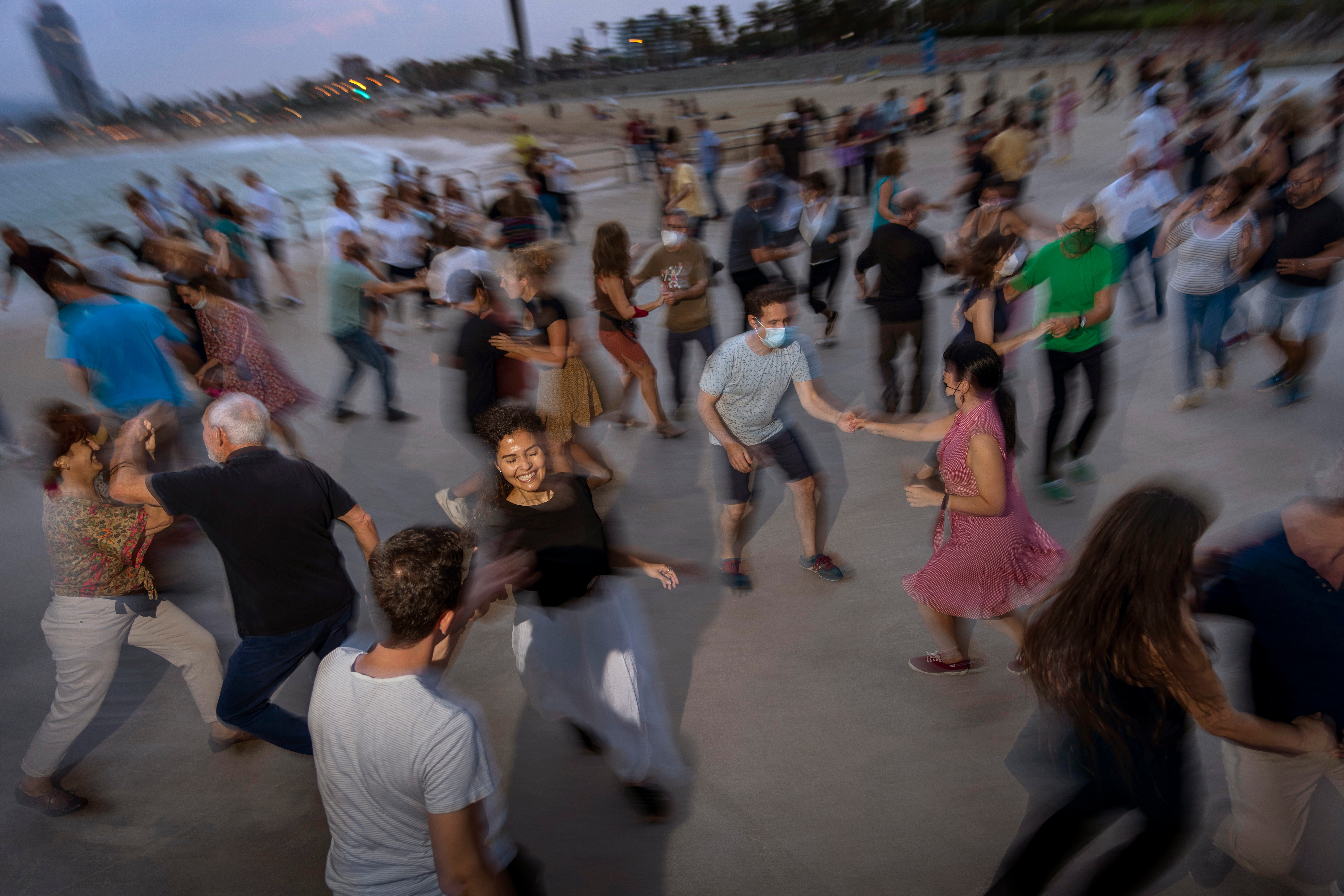After months in lockdown, a weary world is ready to dance

Your support helps us to tell the story
From reproductive rights to climate change to Big Tech, The Independent is on the ground when the story is developing. Whether it's investigating the financials of Elon Musk's pro-Trump PAC or producing our latest documentary, 'The A Word', which shines a light on the American women fighting for reproductive rights, we know how important it is to parse out the facts from the messaging.
At such a critical moment in US history, we need reporters on the ground. Your donation allows us to keep sending journalists to speak to both sides of the story.
The Independent is trusted by Americans across the entire political spectrum. And unlike many other quality news outlets, we choose not to lock Americans out of our reporting and analysis with paywalls. We believe quality journalism should be available to everyone, paid for by those who can afford it.
Your support makes all the difference.Even in the depths of the pandemic -- even when the world locked down, leaving billions isolated and desolated -- there were those who danced.
“I did not stop dancing for a second,” says Federico Carrizo, who competed in the Tango World Championship in Buenos Aires last month. “In the kitchen, on the street, on the balcony ...”
Some danced alone. Some danced alone and yet together, swaying and twirling across the internet. Some danced to be freed of the shackles of the coronavirus, if only for a moment.
“It was very hard to be for a year and a half without being able to go out to the recreation center to dance,” says Joaquin Bruzon. “Sometimes during the quarantine at home we would dance to try to improve our spirits.”
Now, once again, the Failde Orchestra of Matanzas, Cuba can perform danzóns like “El Naranjero” and “Cuba Libre,” “A La Habana me Voy” and “Nievecita.” And once again, Bruzon and his wife, Milagros Cousett, can glide across the dance floor.
Maybe it’s because of the advent of COVID-19 vaccines. Maybe it is because feet can be repressed for just so long. But it seems that everywhere, dancers are letting loose.
At a family gathering on Topanga Beach in Malibu California Pejiman Sabet takes his wife, Gili, in his arms and dances in the sand. “Love is everything right now,” Gili says.
In Taytay, the Philippines members of the INDAK Banak dance company wear masks to prepare for an upcoming competition. Abegail Mesa is overwhelmed -- finally, she can dance with her friends.
In a Beijing, a park is alive with plaza dancing -- an activity popular with middle-aged and older women, curtailed at the pandemic’s height. “As long as I can move, I will keep dancing,” says Li Fei, a lead dancer.
In a Soweto studio, Tsimamkele Crankydy Xako practices South African dance gleefully. On a Cairo rooftop, Nadine El Gaharib spins in the air. In Gaza City, Palestinians romp in traditional uniform.
And in Oruro, Bolivia, the Diablada de Oruro dance -- a fixture of the Andes for hundreds of years -- is back after a one-year hiatus. Its absence was keenly felt. Dancer Andrea Hinojosa recalls how hard it was to sit at home last year and watch tapes of previous carnivals; he was elated to don the spectacular devil’s costume once more.
"Today,” he says, “the joy is back, we are dancing La Diablada again.”
Subscribe to Independent Premium to bookmark this article
Want to bookmark your favourite articles and stories to read or reference later? Start your Independent Premium subscription today.